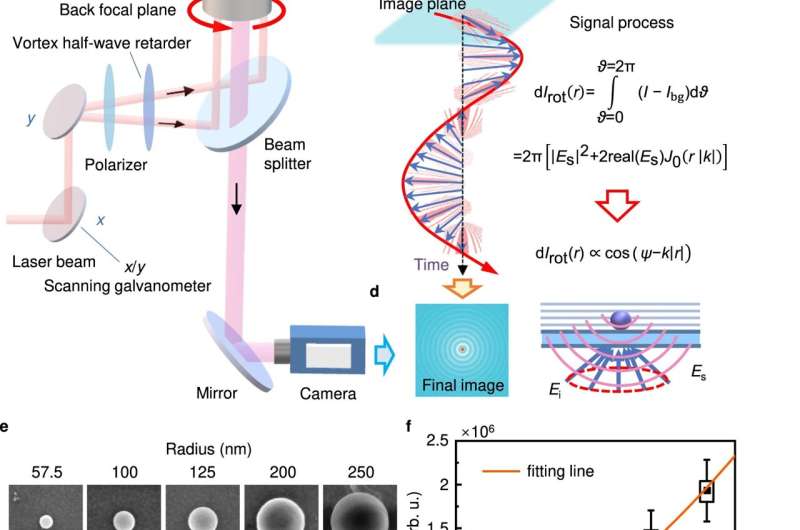This article has been reviewed according to Science X's editorial process and policies. Editors have highlighted the following attributes while ensuring the content's credibility:
fact-checked
peer-reviewed publication
proofread
Achieving dynamic imaging of interfacial electrochemistry

A research team led by Prof. Liu Xianwei from the Department of Environmental Science and Engineering of University of Science and Technology of China (USTC) of the Chinese Academy of Science (CAS) has made progress in the dynamic imaging of interfacial electrochemistry. The results were published in Nature Communications under the title of "Dynamic Imaging of Interfacial Electrochemistry on Single Ag Nanowires by Azimuth-modulated Plasmonic Scattering Interferometry."
The catalytic conversion of pollutants is a pivotal technique in water pollution control. Investigating the dynamic changes of active sites in environmental catalytic materials during the pollutant conversion process is crucial for understanding the structure-activity relationship of these materials, deciphering the catalytic mechanism, and designing and developing new environmental catalysts.
While there is significant interest among researchers in analyzing the active sites of nanomaterials, challenges persist in studying the dynamic progression of reactions at the interface of individual nanomaterials in mild aqueous environments.
In response to the aforementioned challenges, the research team developed a high-resolution plasmonic scattering interferometric imaging technique. By modulating the incident light, they effectively eliminated interference from reflected light, achieving surface plasmonic scattering interferometric imaging with high spatial resolution and robust anti-interference capabilities.
Taking the surface electrochemical reactions over silver as an example, the research team tracked in situ the dynamic electrochemical transformation process of a single silver nanowire in solution, spatially inscribed the distribution of the nanowire reaction, and provided key evidence to establish the relationship between the nanowire surface defects, reconfiguration, and reaction activity.
This label-free imaging analysis method can be integrated with techniques like electron microscopy to characterize the structure and chemical composition of nanomaterials. It offers an effective analytical method and technological platform for high-resolution in situ imaging of pollutant catalytic conversion dynamics and for deciphering their structure-activity relationships.
More information: Gang Wu et al, Dynamic imaging of interfacial electrochemistry on single Ag nanowires by azimuth-modulated plasmonic scattering interferometry, Nature Communications (2023). DOI: 10.1038/s41467-023-39866-8
Journal information: Nature Communications
Provided by University of Science and Technology of China




















